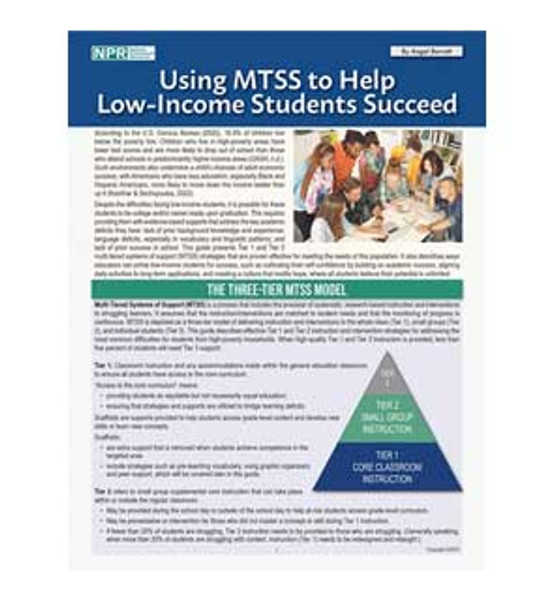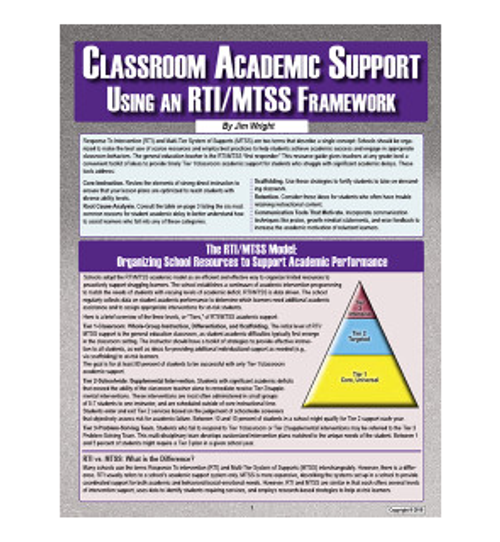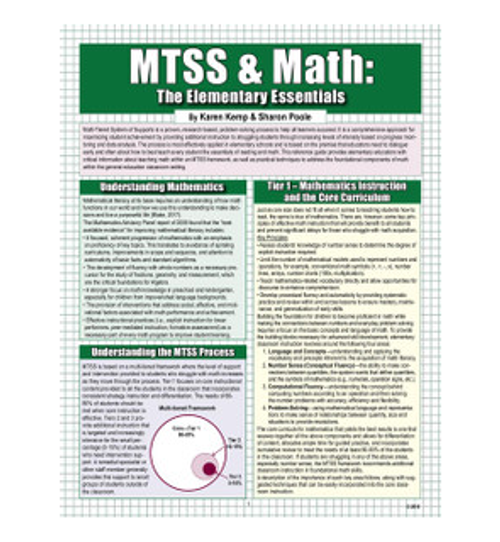Product Overview
According to the U.S. Census Bureau (2022), 16.9% of children live below the poverty line. Children who live in high-poverty areas have lower test scores and are more likely to drop out of school than those who attend schools in predominantly higher-income areas (OASH, n.d.). Such environments also undermine a child’s chances of adult economic success, with Americans who have less education, especially Black and Hispanic Americans, more likely to move down the income ladder than up it (Kochhar & Sechopoulos, 2022).
Despite the difficulties facing low-income students, it is possible for these students to be college and/or career-ready upon graduation. This requires providing them with evidence-based supports that address the key academic deficits they face: lack of prior background knowledge and experience; language deficits, especially in vocabulary and linguistic patterns; and lack of prior success in school. This guide presents Tier 1 and Tier 2 multi-tiered systems of support (MTSS) strategies that are proven effective for meeting the needs of this population. It also describes ways educators can prime low-income students for success, such as cultivating their self-confidence by building on academic success, aligning daily activities to long-term applications, and creating a culture that instills hope, where all students believe their potential is unlimited.








